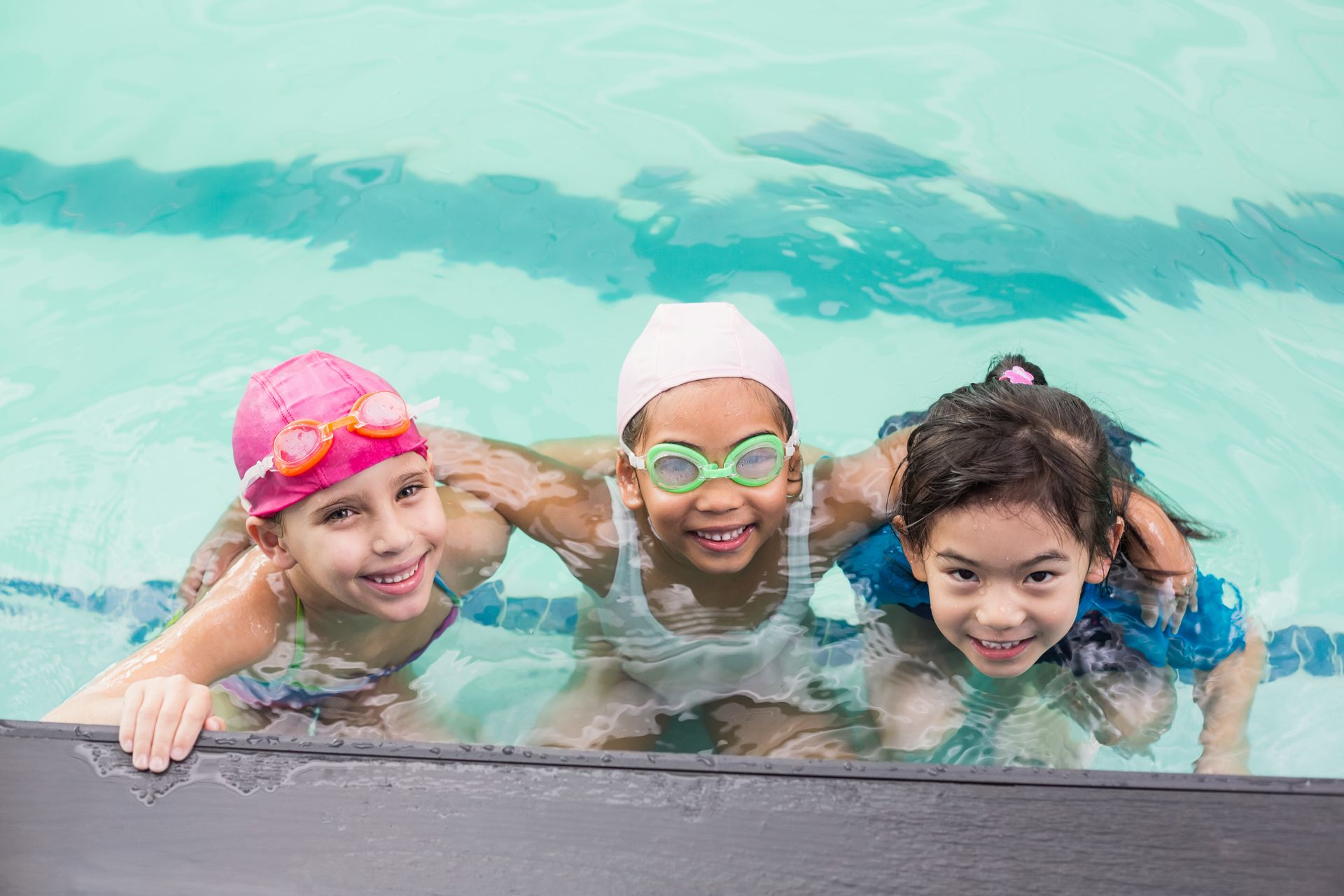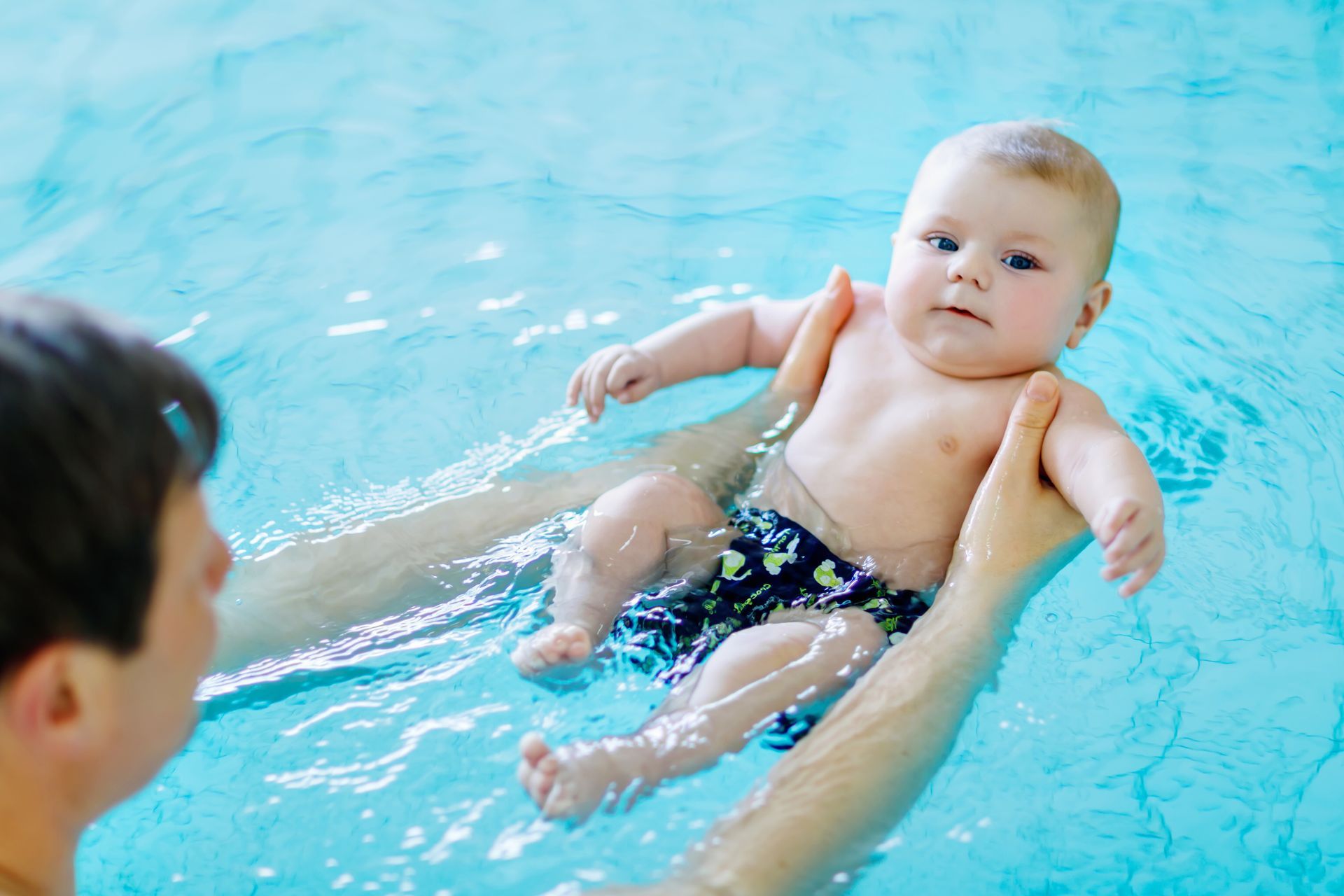Being in the water is enjoyable and exciting. Children that swim for the first-time fear drowning. They need to gain basic swimming skills to prevent this from happening. There are fun games children can play in the water to learn the swimming skills they need.
Talk to the fishies – Children blow bubbles in the water. Then they need to put their ear to the water to hear the imaginary response. This game helps learn breath control because swallowing water by accident is a scary situation. Parents need to encourage children to sink their faces and blow bubbles to increase their comfort level in the water. When parents put their faces in the water, they should come up with a smile on their faces. This way the children see how much fun it is.
Catch the fishies – Parents should sit next to their children on the steps of the shallow part of the water and be eye to eye. The water level should between the child's waist and chest. Parents then need to ask their children to do a forward crawl-like arm stroke by reaching their arms up in the air, then plunging them into the water, and then pulling the water to themselves imagining there were a lot of fishies in the pool. Doing this will get them used to arm movement when swimming. An idea is for parents to sing a song when children move their arms. When the song is finished, parents should ask their children how many fishies they caught. Parents can play the game again with their children.
The swimming skill this game has is developing a fast and strong movement of arms. While doing this, children need to keep their fingers together, this way the fishies can’t escape between their fingers. This helps with their momentum as they swim.
Motorboat front float – Parents need to hold their children firmly under their arms looking at each other. They start walking backwards together in the water picking up speed. The water will gently push children into a front floating position. Parents should then move slowly in a circle saying “Motorboat, Motorboat, Go So Slow.” Parents should pick up speed while saying “Motorboat, Motorboat Go So Fast.” The last line should be “Motorboat, Motorboat Step On the Gas. Parents can either blow bubbles or encourage their children to kick their feet.
This makes children comfortable in the horizontal swimming position. When children get more comfortable with the front float position, parents should hold them so that their outstretched hands are around the back of their necks. Parents should help their children float on their stomachs as if they are taking a nap.
Red Light Green Light – Parents should sit next to their children on the shallow step of the pool. If children are older, they can hold on to the side of the pool facing the wall. When parents say green light, their children need to kick rapidly, yellow light to kick slowly and red light to stop. This encourages the children to propel in the water. During the game, parents can hold their children under their arms. Children should face their parents, begin walking backwards and ask them to kick. If you want to make the game is challenging, have them balance on a flutter board. Parents should have them kicking this way as well.
Taking The Plunge – For this game, it is good to be in the shallow part of the water. Children need to kneel two feet from the wall. Parents must hold their children standing on their knees and hands should be on their waists for support. The first couple of times playing this game children should not be swimming but using force from their jump to get to the wall. This helps children swim on their own. Parents should let their children hang on to the wall for some time. This way they are used to supporting their body weight until parents want them to do it again.
Ring/Coin Toss – Playing these games, children learn to swim deeper and reach the bottom of the water. It is exciting for children to reach things at the bottom and bring them back to the top. If the rings are different colors, parents can let them pick how many and whatever colors they want. Children will want to play the game more if they are involved in the decision making.
Superhero Glides – This is a game for children to learn “streaming” in the water. Children pick the superhero they wish they could be. Children should show parents their superhero arms and begin to glide across the water. This will be fun and make them feel stronger.
Ice Cream Scooping – This game focuses on using their arms. Like Superhero Glides, it is easy and fun for children. They can choose the ice flavor they want to scoop for the day and then they are going to take big scoops of water. Doing this teaches children to keep their fingers together. so the water doesn't go through their hands.
Chop Chop Timber – Some children are scared to jump into the water, so it was turned into a game. Children sit on the edge of the pool in a little seed on the ground, give them water (parents splash a little water on children) and sunshine (make a sun with arms) this way they can grow into a tree. Children can decide what type of tree they want to be and when they get chopped down to their knees getting into the water. Some children get in the water differently by holding both hands, one hand, or no hands.
Face Race – Children become comfortable in shallow water during this game. The requirements needed are a beach ball or another soft object that floats. Parents should stand at one side of the pool from their children and have them push the ball toward them without the use of their hands just their faces. When children finally reach their parents with the ball, they need to be congratulated for their effort.
Ping Pong Float – Parents need to get a lot of ping pong balls and put them into the shallow part of the water. Children need to collect all the balls, one at a time and put them into a bucket that is at the edge of the pool. Parents can set a timer to test the speed of their children.
Underwater Toy Rescue – This is like the Ping Pong game. The only difference is that children swim underwater to collect the toys. Parents should put one or two toys in the shallow water. This game will give children the confidence to hold their breath and keep their eyes open underwater. Children should play this game when they are comfortable in the water.
Shark Attack – This is a game of tag. One child is the shark and counts to ten with their eyes closed. When the child reaches ten, the shark goes looking for the other children. The shark catches one child then he or she takes on the new role of being the shark. This game will help children feel comfortable moving around in the water. As the children get older, they become more confident swimmers. This becomes an exciting and challenging game for sure.
These water games make children better swimmers in the water. The swimmers love playing these games because they’re fun and they can stay cool from the hot sun.Fun p







